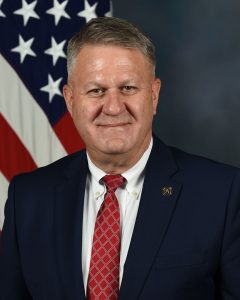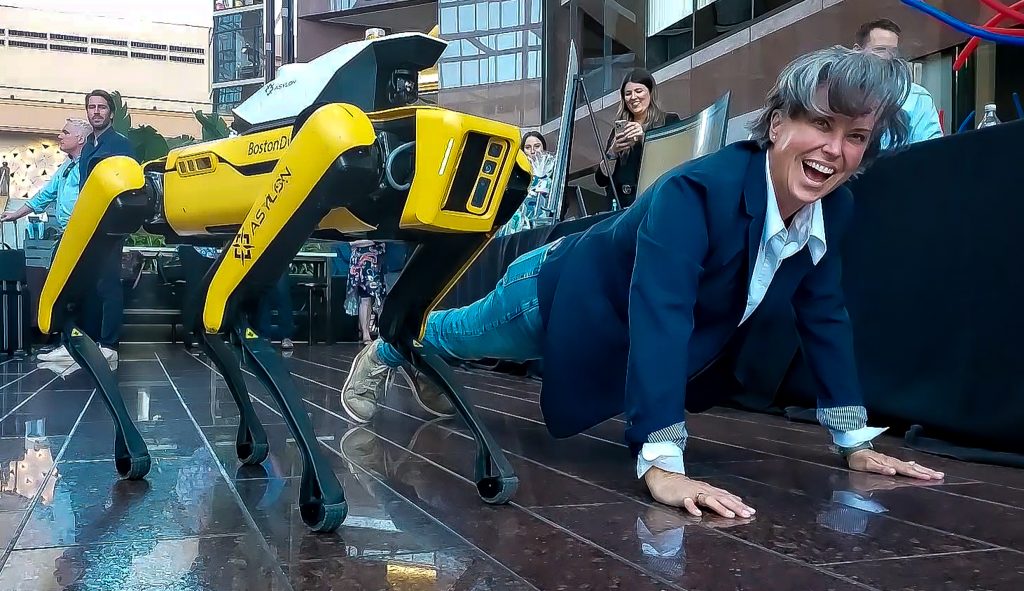
In March 2022, the TWI Fellows gathered at Sig Sauer to learn about their business practices and share information from their personal TWI experience. (Photo by Rachel Berry, DACM Office)
FROM THE DIRECTOR OF
ACQUISITON CAREER MANAGEMENT
RONALD R. RICHARDSON JR.

Ronald R. Richardson Jr., Director, U.S. Army Acquisition Support Center and Director, Acquisition Career Management
In our line of business, if it’s not in the user’s hands, it’s of no use to anybody.
But to meet that goal can be quite the process—one that in many cases is necessary, but in others must be improved if we are to ensure our Soldiers are never in a fair fight.
Yes, we need to:
- Rapidly develop prototypes and deliver capabilities to the workforce through alternative acquisitions.
- Constantly research, develop, test and evaluate.
- Streamline the Army Acquisition Workforce.
But it is everyone’s responsibility across the Army acquisition community to instill and grow a culture of innovation and creativity if we are to ensure overmatch.
THE ENTREPRENEURIAL MINDSET
As I mentioned in my last column, 2023 is the year of digital transformation. This year will be a key steppingstone toward the Army achieving the Army of 2030 modernization goals, in which the Army Acquisition Workforce plays a critical role. As we become more laser-focused on problem sets and looking at ways to save time in the cost, schedule and performance timeline, we need to also look at how we’re equipping our workforce with skills to help it shift to a related mindset.
When I go out and engage with program executive offices, I always ask what they need, and what I hear most is “critical thinkers.” Being able to analyze facts and observations in a clear and rational way is necessary, but I would argue that above that we need our acquisition professionals to have an entrepreneurial mindset.
An entrepreneurial mindset is one that cultivates innovation, is agile and sees mistakes as opportunities. We must push the envelope of technology and speed up our timeline. Leaders must encourage new ideas—nobody has a monopoly on good ideas. We must take a team approach and know when to rely on our partners, whether its within our organizations, industry or academia. And we must know when to take risks. We too often get wrapped up on the unknowns when there are a lot of knowns we can be planning for.
The Army, including my office, has several professional development programs and training opportunities available for our workforce that can be used to help develop this mindset. As we promote and execute these programs, we must also be purposeful with how we are maximizing their use and impact.

EMBEDDED IN INNOVATION: The Training With Industry program strengthens and maintains the relationship between the acquisition workforce and companies that develop innovative, cutting-edge technologies. (Graphic by USAASC)
PURPOSEFUL PROGRAMS
Our partnership with industry must continue to be strengthened and maintained, and we must share and learn what we can from one another. Our Training With Industry program embeds acquisition officers into the business sector for 12 months. The list of participating companies is specifically curated to include developers of innovative, cutting-edge technologies.
On the civilian side, the Department of Defense’s Public Private Talent Exchange (PPTE) program gives acquisition civilians nine months of hands-on experience, gaining insight into the business’s priorities, strategies and operations. Civilians may also gain industry experience as part of the Senior Enterprise Talent Management program’s Army Senior Fellowship, which incorporates graduate training with 12 months training with industry.
In addition to sending our acquisition officers and civilians to industry, we can also look at bringing industry to us. The PPTE program is bi-directional and brings the government a unique skill set and expertise—without having to contract for it.

MAXIMIZE DEVELOPMENT: Brig. General Christine A. Beeler, commanding general, Army Contracting Command, speaks to military and civilian personnel assigned to the Program Executive Office Simulation, Training and Instrumentation (PEO STRI) staff during a professional development series event. Maximizing professional development programs in the acquisition workforce will be key for the Army of 2030. (Photo by Donnie Ryan, Program Executive Office Simulation, Training and Instrumentation)
PURPOSEFUL LEADERSHIP
While the Army has developed and continues to refine these programs, it is our leaders who have the most impact on their success. Organizational leaders must have awareness of the programs, understand their intent and value, and ultimately be supportive of sending workforce members. While it may seem there will be a short-term negative impact on the organization to lose an esteemed teammate for nine or 12 months, the long-term impact of sending quality acquisition professionals is an investment for that person, the organization and the Army—one that we depend on leveraging upon their return and into the future.
Leaders also should consider the needs of the organization and the Army’s goals in the type of experience and expertise gaps we may be able to fill through these programs. As workforce professionals are selected to participate in these programs, leaders should set meaningful expectations and look for creative ways to put that new experience and expertise to use within the organization.

KEEP UP WITH THE COMPETITION: Col. Brandi B. Peasley, deputy commanding officer, 75th Innovation Command, competes in a pushup challenge against a DroneDog during the 2022 Fed Supernova Conference Sept. 29 in Austin, Texas. Sponsored by Capital Factory, Fed Supernova connects entrepreneurs, government and industry together to collaborate on dual-use solutions that put commercial technology in the hands of the Department of Defense. (Photo by Staff Sgt. John L. Carkeet IV, 75th Innovation Command)
PURPOSEFUL CAREER PLANNING
Each workforce professional is ultimately responsible for their own career path. It is important to properly plan your career development and growth, and map that alongside any personal milestones.
My office has developed career models for officers, noncommissioned officers and civilians in each available functional area. In addition to considering and applying for career development programs, continuous learning and training is another easily accessible path available to you now. As our time is invaluable, acquisition professionals, in conjunction with your supervisor, must be purposeful in determining what skills need refreshing or what new skills might be needed for the job you are doing now or expect to be doing in the near future.
The Defense Acquisition University’s Credential Program provides that timely and job-specific training. Through the Army Civilian Career Management Activity, acquisition civilians also have access to Udemy Business, an online learning platform with a variety of learning paths, such as the Digital Transformation 2023 Masterclass that provides foundational skills from design thinking to creating a digital transformation framework.
CONCLUSION
Our most valuable asset is our people, and we’re fortunate to have been given resources to develop individuals and teams and to encourage an entrepreneurial mindset. Together, let’s make the most of it through purposeful programs, leadership and career planning.


